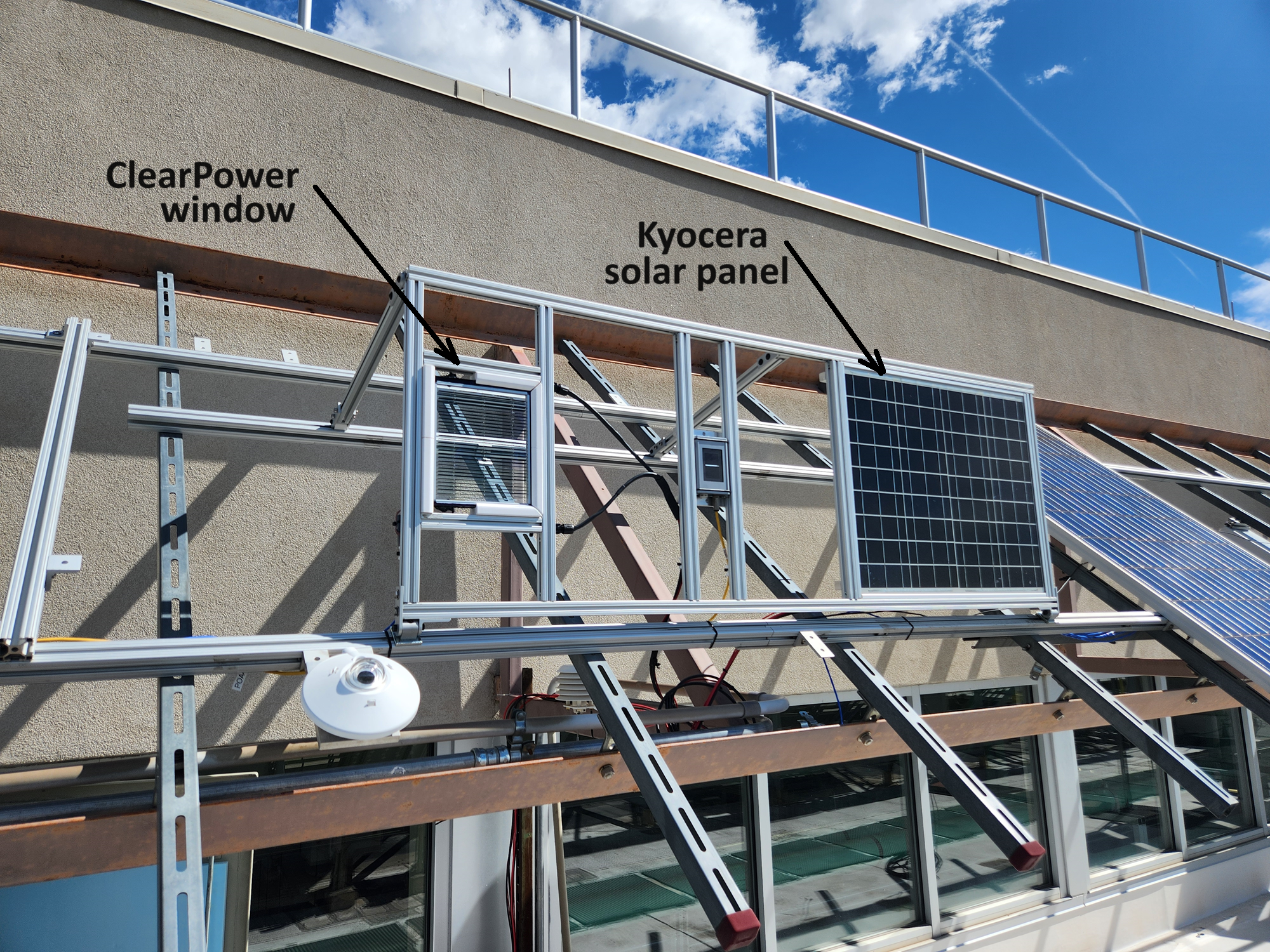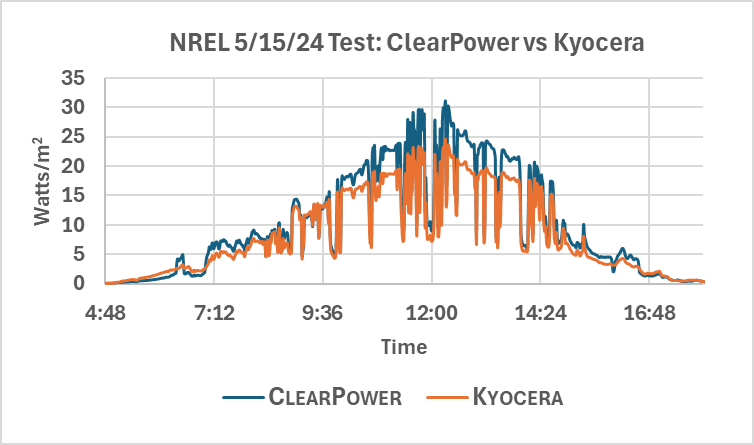Sign up for daily news updates from CleanTechnica on email. Or follow us on Google News!
Jim Paull is what many would call a serial entrepreneur. He says his areas of expertise and accomplishment include deal structuring and closing, formulation of competitive strategies, and successful execution of startup businesses with limited resources. He has coupled his engineering background with a lifetime of experience in energy and renewable energy markets to guide several startup businesses from the concept phase to commercial viability. His latest endeavor involves perfecting ClearPower solar windows and bringing them successfully to market.
A resident of Andover, Massachusetts, Paull began experimenting with solar windows, otherwise known as PV or photovoltaic windows, in 2006. Today, the technology he helped create is being validated by the National Renewable Energy Laboratory. The first results of that testing are in and they are everything he and his team hoped they would be.
Solar windows are kind of a no-brainer. There are millions upon millions of square feet of windows in the world. What if, in addition to letting us see the world outside, they could generate electricity for our homes and office buildings as well, electricity that could be consumed right where it is generated? It could help run air conditioners and heating equipment, power our elevators or cook our food, and make us less reliant on the electrical grid. All of that electricity would be 100% emissions free as well — an added bonus for a world facing the challenge of rising average temperatures.
In a way, solar windows are similar to the idea of using the batteries in electric cars to help power our homes. If managed properly, all those batteries can be combined into virtual power plants that soak up excess electrons when parked and give them back when needed. They can help utility companies balance supply and demand so there is enough electricity to meet people’s needs without building expensive new generating stations or long distance transmission lines. Solar windows and vehicle-to-home technology can help democratize electricity so that we have more control over our own energy usage while reducing the burden we place on the planet when we generate electricity by burning fossil fuels.
Solar Windows & Economics
So far, solar windows have one serious drawback. They barely generate enough electricity to pay for themselves. They tend to be like early solar panels, with an energy efficiency of 2% or less — sometimes much less. They have another problem as well. They tend to block the view, which rather defeats the purpose of having windows in the first place. Jim Paull has a different idea. What if the solar modules in windows were oriented horizontally rather than vertically? And what if doing so allowed them to harvest electrons from sunlight reflected upwards from below as well as directly from above?
To add a little more goodness to the package, what if they could block some sunlight in warmer months when the sun is high overhead but allow more of it into interior spaces during colder months when a little solar heating would be welcome? Heating and air conditioning costs are a major concern for all building owners. ClearPower windows can help control those costs while they generate electricity.
ClearPower’s innovative design features bi-facial, crystalline silicon solar cells placed between two panes of an insulated glass window. The horizontal cell orientation makes the solar cells appear like tiny Venetian blinds that are always open. When seen from a few feet away, they virtually disappear from view. These are the same cells used in over 90% of solar panels, so their durability and performance has been proven over decades of commercial use.
As noted, Jim Paull began experimenting with his ideas about how to make energy efficient solar windows in 2006. Today his company, ClearPower, is manufacturing a small quantity of custom windows for clients who are early adopters of the new technology while the validation work by NREL is taking place. The data from the lab will be vital to convincing others to consider the ClearPower solar windows for new construction and replacing existing windows in the built environment.

When changes in technology like this happen, people often say they are an overnight sensation, but there are years of hard work before new ideas gain traction. Jim Paull is leveraging his years of experience in the business world and the industry contacts he has made in the course of his career to move the process forward. The NREL validation testing won’t be completed until this fall, but already the data is highly promising. The test panel — the tiny frame on the left in the photo above — is outperforming that of the Kyocera solar panel on the right. Here is a graph showing the observed output of both during the most recent testing.

Managing Solar Gain
The company says its ClearPower window not only produces power at an efficiency and power density comparable to PV modules, but also provides solar heat gain control to reduce air conditioning and heating costs. It leverages the encapsulation of multi-pane insulated glass windows and is of inexpensive construction, which means the cost of ClearPower windows is much lower than other BIPV technologies. The result is a fully transparent, powerful BIPV window that annually harvests 68 to 75% of the energy of high efficiency conventional PV modules in the same orientation. By having the economic benefit from both PV-generated electricity and reduced heating and cooling loads, the payback is short enough to make widespread adoption affordable.
In an email to CleanTechnica, Jim Paull indicated he was delighted that his creation is finally nearly ready for full-scale commercial production. It has been a long process, but the stars seem to have aligned in his favor. Greenhouse gas emissions from buildings exceed those from the transportation sector, which makes the need to decarbonize the built environment all the more urgent. He feels he and his company have the right technology at the right time to help building owners comply with stricter building codes and the low carbon initiatives put in place by many municipalities in America and around the world.
He made it clear that the ClearPower solar windows generate up to five times as much electricity as their closest competitors, putting them at the forefront of bifacial PV window technology. The ability to help control heating and cooling costs is an important added benefit that other PV window companies cannot match.
The Takeaway
Every once in a while, an idea comes along that is just so right for the times, we wonder why no one thought of it sooner. The path forward for Jim Paull and his ClearPower solar windows is one such idea. It might not have gotten people excited back in 2006 when Paull first started working on the initial concepts, but a lot has changed since then and it seems his company is now at that inflection point, that sweet spot, of having the best technology available at precisely the time when we need it most.
Have a tip for CleanTechnica? Want to advertise? Want to suggest a guest for our CleanTech Talk podcast? Contact us here.
Latest CleanTechnica.TV Videos
CleanTechnica uses affiliate links. See our policy here.





